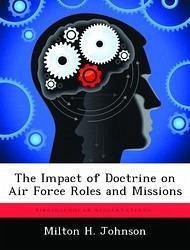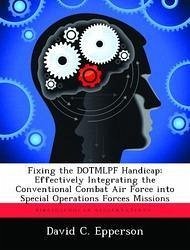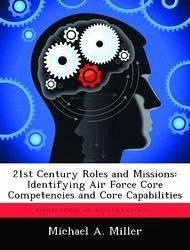Nicht lieferbar

The Impact of Doctrine on Air Force Roles and Missions
Versandkostenfrei!
Nicht lieferbar
Our nation's armed forces are undergoing a transformation initiated by the end of the cold war. This transformation has both political, and military dimensions. This paper takes a historical look at the role of doctrine in the past in Chapter 1 and concludes that doctrine will continue to play an important role. Chapter 2 studies the history of significant roles and missions reviews with an eye towards the durability of decisions made in these reviews and an understanding of institutional barriers to change. Chapter 3 covers our national policy in the post cold war period and provides a steppi...
Our nation's armed forces are undergoing a transformation initiated by the end of the cold war. This transformation has both political, and military dimensions. This paper takes a historical look at the role of doctrine in the past in Chapter 1 and concludes that doctrine will continue to play an important role. Chapter 2 studies the history of significant roles and missions reviews with an eye towards the durability of decisions made in these reviews and an understanding of institutional barriers to change. Chapter 3 covers our national policy in the post cold war period and provides a stepping stone to Chapter 4. It is in Chapter 4 that the technological advances brought about by the cold war, doctrine, and national policy are combined with a strategy and then applied to the new world situation. This section concludes that there are tremendous advantages available to the United States government in attacking the leadership of states inimical to US policy. The research conducted represents a review of both historical and contemporary works, with a focus on the idea that the Air Force should change and now is a good time for change. This work has been selected by scholars as being culturally important, and is part of the knowledge base of civilization as we know it. This work was reproduced from the original artifact, and remains as true to the original work as possible. Therefore, you will see the original copyright references, library stamps (as most of these works have been housed in our most important libraries around the world), and other notations in the work. This work is in the public domain in the United States of America, and possibly other nations. Within the United States, you may freely copy and distribute this work, as no entity (individual or corporate) has a copyright on the body of the work. As a reproduction of a historical artifact, this work may contain missing or blurred pages, poor pictures, errant marks, etc. Scholars believe, and we concur, that this work is important enough to be preserved, reproduced, and made generally available to the public. We appreciate your support of the preservation process, and thank you for being an important part of keeping this knowledge alive and relevant.













